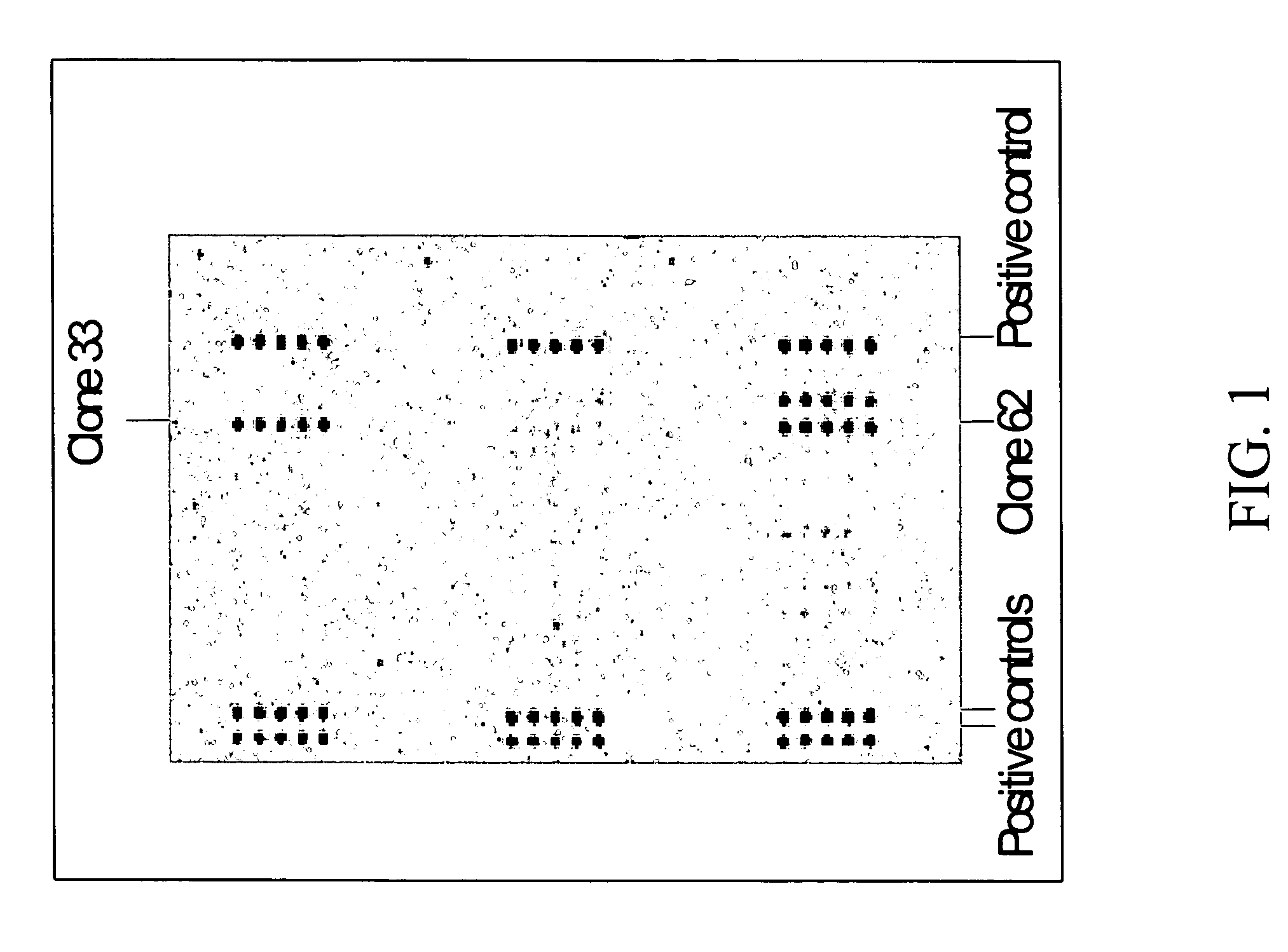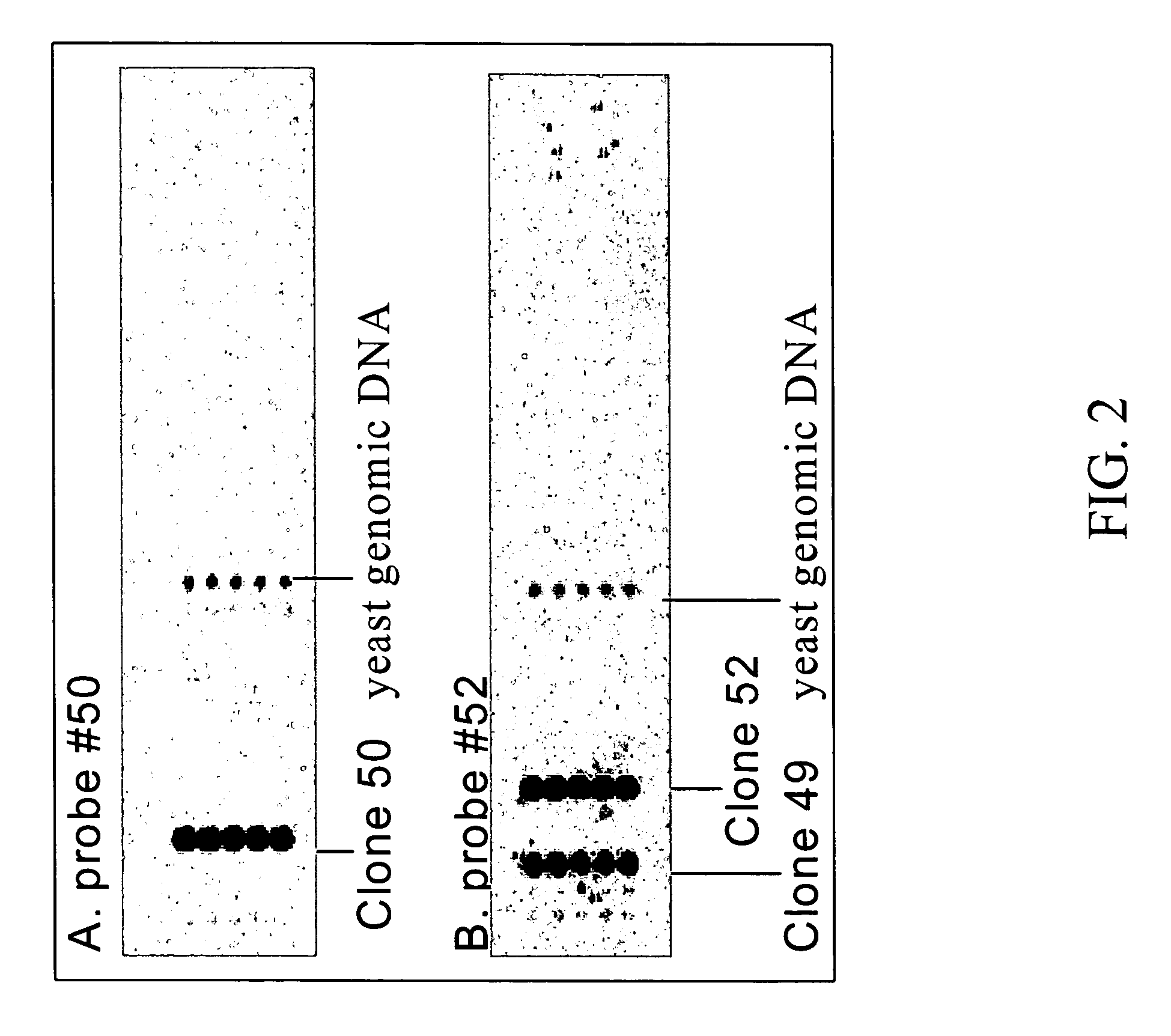Artificial genes for use as controls in gene expression analysis systems
a gene expression analysis and artificial gene technology, applied in the field of using artificial genes as universal controls in gene expression analysis systems, can solve the problems of reducing the ability of scientists to compare data across labs, users, or time, and often appearing biased microarray measurements
- Summary
- Abstract
- Description
- Claims
- Application Information
AI Technical Summary
Benefits of technology
Problems solved by technology
Method used
Image
Examples
example 1
Generation of Artificial Controls from Intergenic Regions of S. cerevisiae Genome
[0099] Using yeast genomic sequence data publicly available at the Stanford University web site, intergenic regions (YIRs) approximately 1 kb in size were identified. These sequences were BLAST'd and those showing no homology to other sequences were identified as candidates for artificial gene controls. Candidates were analyzed for GC-content and a subset with a GC-content of ≧36% was identified. Specific primer sequences have been identified and synthesized. PCR products amplified with the specific primers have been cloned directly into the pGEM™-T Easy vector (Promega Corp., Madison, Wis.). Both array targets and templates for spike mRNA have been amplified from these clones using distinct and specific primers.
[0100] When used as DNA controls, the YIR sequences were amplified by PCR with specific primers, using 5 ng of cloned template (plasmid DNA) and a primer concentration of 0.5 μM in a 100 μl re...
example 2
Performance Evaluation of the Artificial Controls
[0109] The universal controls (both the spike mixes and their corresponding spotting samples) have been evaluated for their performance in real microarray experiments and tested for the following.
[0110] Experimental design, including array design and the hybridization sample concentration were tested (FIG. 3). Control samples were spotted in five replicates and hybridized with probes prepared with the spike mix only or the spike mixes with skeletal muscle mRNA. The same array image in FIG. 3 is shown at two different gray scales for easy visualization of signals across the entire dynamic range.
[0111] Universal utility, including hybridization of the spikes on pre-arrayed slides from various species were also tested. The controls showed no cross-hybridization on human, rat, mouse, Arabidopsis, Yeast and E. coli pre-arrayed slides from commercial sources (data not shown).
[0112] Spike mix performance was tested, including ratio perfo...
PUM
| Property | Measurement | Unit |
|---|---|---|
| Concentration | aaaaa | aaaaa |
| Level | aaaaa | aaaaa |
Abstract
Description
Claims
Application Information
 Login to View More
Login to View More - R&D
- Intellectual Property
- Life Sciences
- Materials
- Tech Scout
- Unparalleled Data Quality
- Higher Quality Content
- 60% Fewer Hallucinations
Browse by: Latest US Patents, China's latest patents, Technical Efficacy Thesaurus, Application Domain, Technology Topic, Popular Technical Reports.
© 2025 PatSnap. All rights reserved.Legal|Privacy policy|Modern Slavery Act Transparency Statement|Sitemap|About US| Contact US: help@patsnap.com



